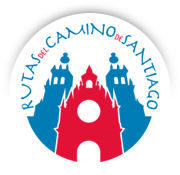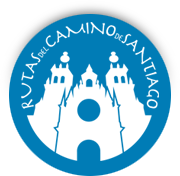
Portuguese Way
The Portuguese Jacobean Way was added to the other routes when the country became independent in the middle of the XIIth century. From this moment on both the Jacobean cult and the pilgrimage to Compostela, valued as one of the symbols of european identity

TUI
:This town of the province of Pontevedra with it's 16827 inhabitants is on the Portuguese border, forming alongside the town of Valença do Minho (Portugal) a 'Eurocity' as a result of co-operation and integration between both towns. It is separated only by two bridges which cross the River Miño. Of interest are the cathedral of Santa Maria de Tui and views of the Valença fortress next to the River Miño. The glass eel is one of the specialities of this pontevedran municipality.

O PORRIñO
:This pontevedran municipality of 18908 inhabitants is made up of 8 parishes: Atios (Santa Eulalia), Cans (San Esteban), Chenlo (San Juan), Mosende (San Jorge), Pontellas (Santiago), Porriño (Santa María), Budiño (San Salvador) y Torneiros (San Salvador). The town hall, designed by the famous XXth century local architect Antonio Palacios, forms a part of O Porriño's heritage. This industrial town has two industrial estates and the largest granite quarries in the world.
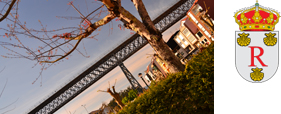
REDONDELA
:Redondela, with a popolation of 29918, borders the Ría de Vigo or Vigo Estuary, and boasts two viaducts, linking Madrid and Pontevedra, which in 1978 were declared Assets of Cultural Interest. The town also has other monuments including stately homes, churches or the Convent of Vilavella. There are other examples of culture and history in the form of prehistoric engravings in Coto Do Corno o Monte Da Peneda, (Asset of Cultural Interest) among others.
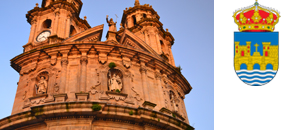
PONTEVEDRA
:This city of 83000 inhabitants, capital of the province as well as that of the Rías Baixas, is the most important city along the Portuguese Way within Spain. It's historical centre is the most important after that of Santiago. It houses numerous museums, cultural centres, and a University. As within all of Galicia the seafood, fish, meats and vegetables available in the city's markets are a treat for the pilgrims who stay over in this lively city.
Of interest are the numerous parks and the emblematic modernist buildings such as the Valle-Inclán Institute or those of the central Plaza de la Herrería.
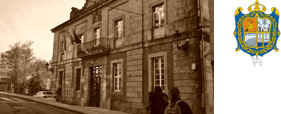
CALDAS DE REIS
:Located on the banks of the River Umia and with a population of more than 10000 the Pontevedran town of Caldas shows evidence of human presence since prehistory. Here were born illustrious characters such as Alfonso de Borgoña, grandson of Alfonso VI of León and Castilla son of Urraca I of León y Castilla , later to be crowned Emperor Alfonso VII of León. Hence the name 'Caldas de Reis' which refers to kings. This town is also known for it's famous spas and hot springs which help the pilgrim to rest and relax in a wonderful environment.
Located on the banks of the River Umia and with a population of more than 10000 the Pontevedran town of Caldas shows evidence of human presence since prehistory. Here were born illustrious characters such as Alfonso de Borgoña, grandson of Alfonso VI of León and Castilla son of Urraca I of León y Castilla , later to be crowned Emperor Alfonso VII of León. Hence the name 'Caldas de Reis' which refers to kings. This town is also known for it's famous spas and hot springs which help the pilgrim to rest and relax in a wonderful environment.

PADRóN
:Also known as the old Iria Flavia (A Coruña) it is the birthplace of Camilo José Cela and also where Rosalía de Castro died. It is famous for it's peppers (some are hot and others not) and is another of the many cases in which the Camino enhances the pilgrim's experience in unexpected ways. Of it's heritage we can mention El Pedrón, the Convents of the Carmen and of St. Antonio de Hebrón, or the Church of Santiago. A town of almost 9000 inhabitants, Padrón is the perfect place for culture and gastronomy before reaching Santiago.

SANTIAGO DE COMPOSTELA
:The town of Santiago was born after the discovery of the tomb of the Apostle James. A mixture of legends about Roman villas, Celtic hill-forts, miraculous lights, stone boats...What history has been able to ascertain is the existance of Bishop Teodomiro de Iria Flavia, who in 814 visited the place and confirmed that here was the sepulchre of Santiago the Elder, describing the miraculous arrival of his remains at Compostela.
Little by little with the arrival of the pilgrims the route began to be called the Camino de Santiago. Thus Santiago became the most important city of Galicia and of the northwest of the Iberian peninsula. In time Santiago became a service industry town, mainly upper education, religion and medical attention. The arrival of large numbers of students in the 1960's helped to make what Santiago is today: a dynamic centre in all spheres.
© 2014. Rutas del Camino de Santiago. All rights reserved | Legal Advice  +34 685 186 974 - +34 923 54 16 88
+34 685 186 974 - +34 923 54 16 88
 +34 685 186 974 - +34 923 54 16 88
+34 685 186 974 - +34 923 54 16 88
